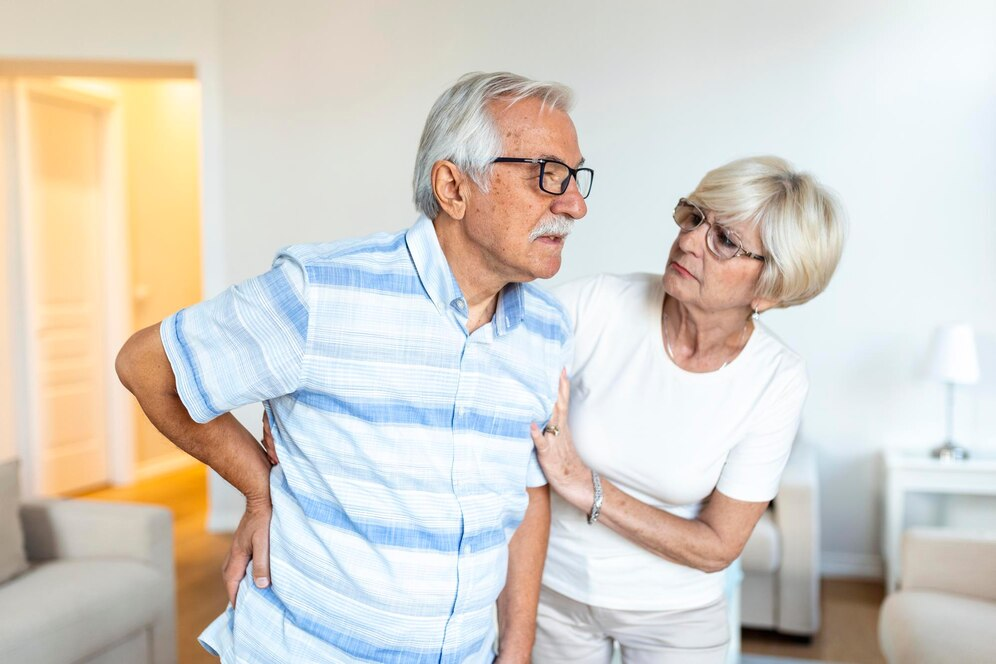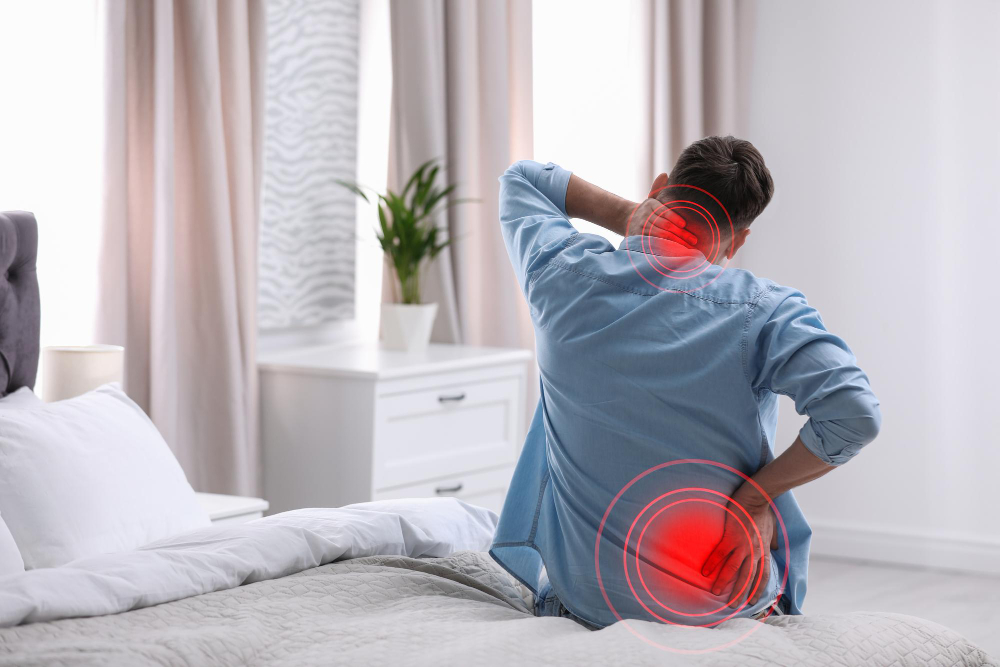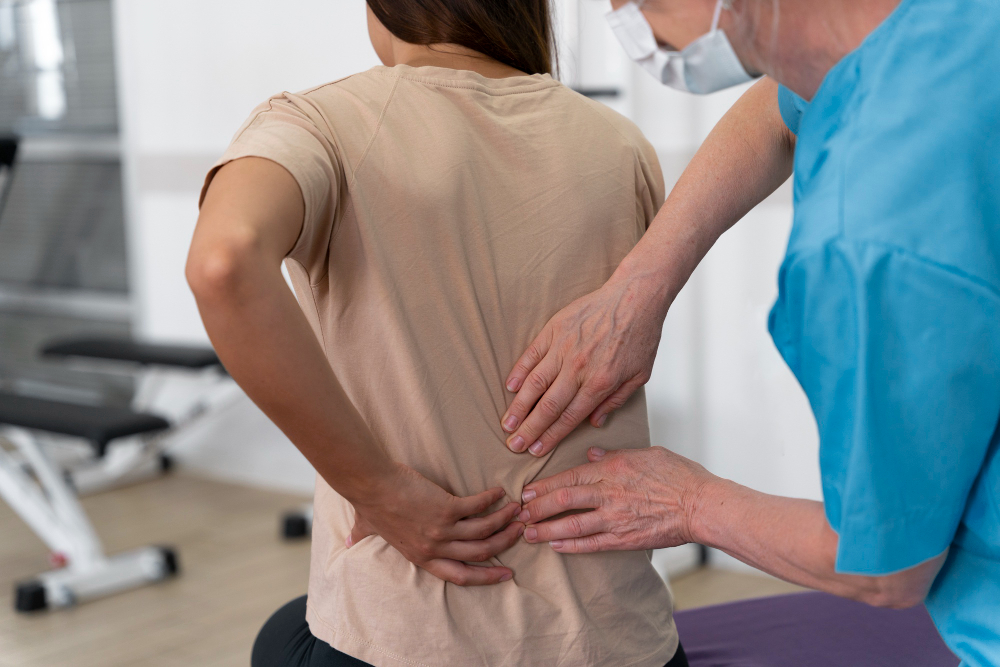
Are you feeling stiffness or pain in your neck or back? It might be a sign of spondylosis, a common condition affecting the spine. Understanding its symptoms is the first step in managing it better. This comprehensive guide covers everything you need to know about spondylosis, including its symptoms, types, and treatment options. Readers will learn how to identify early warning signs and explore various strategies for relief.
What is Spondylosis?
Spondylosis is a common spine issue many face. As I delve into spondylosis, picture the spine as a tree trunk. Over time, the wear from age impacts the spine much like weather wears on a tree. This spinal degeneration comes as we grow older. Spondylosis often appears in those over 60 years old, much like gray hair and wrinkles.
Spondylosis means the spine joints and discs break down. It’s not one illness but a general term for wearing down of the spine. We all experience some spine changes with age, yet this can lead to stiffness or pain.
What Are the Types of Spondylosis?
Cervical Spondylosis
Cervical spondylosis affects the neck area. It happens to many as they age. Most people over 60 have some signs of it. Common problems include neck pain and stiffness. The discs lose water and shrink. This can pinch nerves. If nerves get pressed, one might feel tingling or weakness in arms or legs. Sometimes, control over bladder or bowels is lost. These are serious signs. See a doctor if this happens.
Lumbar Spondylosis
Lumbar spondylosis impacts the lower back. It differs from lumbar spondylolisthesis. Spondylolysis involves the discs and vertebrae getting worn out. It might cause back pain. Discomfort can spread to buttocks or legs. Unlike lumbar spondylosis, lumbar spondylolisthesis means a vertebra slips out of place. That can pinch nerves and lead to pain or weakness. It’s important to understand these differences. They guide treatment and care.
What Are the Causes of Spondylosis?

Spondylosis often results from aging. As we age, our spinal discs lose water. This makes them shrink and become fragile. Genetic factors can also play a role. If your family has a history of spine issues, you might be more at risk. Lifestyle choices matter too. Poor posture, lack of exercise, and being overweight can speed up spondylotic changes. Healthy habits might lower these risks.
What Are the Symptoms and Indicators of Spondylosis?
In Spondylosis, you often notice pain and stiffness. These feelings most often show up in your neck or lower back. These areas are called the cervical and lumbar regions. If the bones in your neck press on nerves, you might feel tingling, numbness, or weakness in your arms and legs. Some people feel worse when bending or walking, and this signals a worsening of the issue.
With Spondylosis, there are times when you need to act fast. If you feel sudden numbness or weakness, this is a sign to visit a doctor. Losing control over your bladder is another warning signal. When you feel unusual pain that doesn’t ease, it’s time to seek help. Immediate care can prevent further injury or permanent damage.
How is Spondylosis Diagnosed?
Doctors use a few tests to find spondylosis. The main tests are imaging procedures. MRIs, X-rays, and CT scans show changes in the spine. These pictures help doctors see what happens inside your neck or back. They find problems like pinched nerves or narrow spaces in the spine.
But imaging isn’t everything. Doctors also ask questions about your health and symptoms. They might check your neck’s range of motion.
What Are the Treatment Options for Spondylosis?

Non-Surgical Treatments
When dealing with Spondylosis, non-surgical treatments are often the first choice. Medications can help reduce pain and swelling. Over-the-counter pain relievers, like acetaminophen, are common starting points. If needed, doctors may prescribe stronger medicines to manage discomfort.
Physical therapy plays a large role in treatment. A therapist can guide you through exercises that strengthen muscles around your spine. Strong muscles support your spine better, reducing tension. Stretching is also important to keep your body flexible.
Lifestyle changes make a big difference. Regular exercise helps maintain a healthy weight, putting less strain on your spine. A proper diet also supports overall health and bone strength. Pay attention to posture; standing and sitting correctly can help.
Surgical Treatment
Several procedures can address Spondylosis. A common surgery is spinal fusion. This procedure connects bones in your spine so they move less, alleviating pain. Another option is decompression surgery, which removes bone spurs and thickened tissues to relieve pressure on the nerves.
While surgery works well for many, it’s crucial to understand the risks and benefits. Success can vary, but many patients find relief and resume normal activities. Always refer to expert sources for reliable information on procedures.
What Exercises and Physiotherapy Are Beneficial for Spondylosis?
Which Exercises are Recommended for Cervical and Lumbar Spondylosis? :
When managing Spondylosis, exercises that build strength and flexibility are key. Gentle neck stretches can help with cervical Spondylosis. For lumbar Spondylosis, try simple back exercises like pelvic tilts and knee-to-chest moves. Always consult with a physical therapist before starting any exercise. Their guidance ensures you pick the right exercises based on your abilities. This approach helps prevent further harm and supports your rehabilitation process.
Conclusion
Spondylosis is a common condition that affects the spine as people age, leading to pain, stiffness, and reduced mobility. While it’s a natural part of aging, its impact can vary widely, and with the right understanding, it can be managed effectively. Recognizing the symptoms early and getting a proper diagnosis is key to finding the right treatment.
